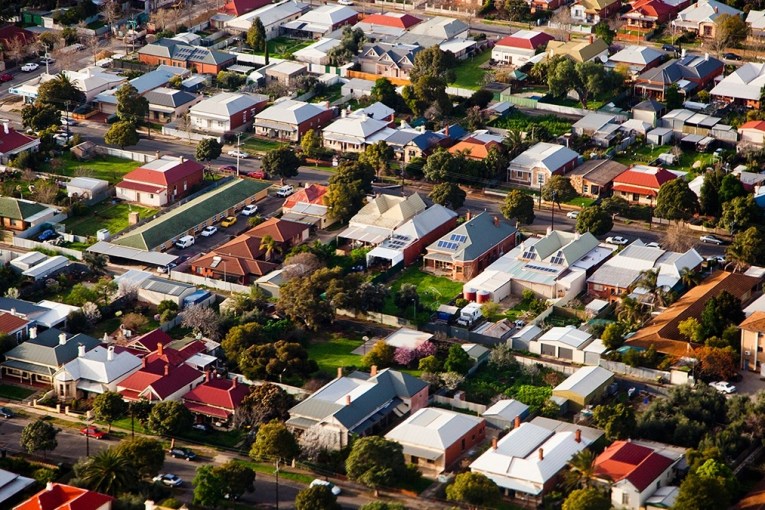A dummy’s guide to gearing’s impact on property


Positive gearers should be willing to spend money on maintenance.
Without doubt, “gearing”, negative or otherwise, has a significant impact on Australia’s property market.
It affects everything from rental and home prices, to housing stock and even the rental vacancy rate.
But what exactly is gearing?
Gearing (in laymen’s terms)
Gearing is the process of borrowing money for the purpose of buying an investment property. Given the practical costs of owning a home, this is a process that generally requires a high, stable income.
• Understanding architecture: what’s your home?
• What $3 million can buy in Tassie
• Vince Colosimo’s hip Northcote pad
This differs from the regular purchase of a home. Most people buy a home with the intention of living in it, however investment properties are commonly purchased as secondary property.
In most cases, investors are searching for tenants to help offset the costs of home ownership.

Negative gearing drives house prices up and rental prices down.
Property gearing:
• Is designed to make a profit;
• Involves borrowing money to purchase a property;
• Differs from purchasing a home to occupy or use it;
• Makes a rental income for the owner;
• Requires a high income to maintain ongoing costs.
Positive gearing
Positive gearing is when the rental income on an investment property exceeds the cost of maintaining it, thus generating more income than losses.
This occurs if a property is purchased and used to make a short-term profit through rent, usually at times when interest rates are low, and rental rates are high.
The rent collected exceeds the cost of repayments, maintenance and interest, and the owner gains an additional income stream.
Positive gearing is primarily practiced in areas that are experiencing substantial industry and employment growth, particularly in rural areas.
This surge increases demand for rental properties, which in turn allows owners to charge higher rents, and to make larger profits from the geared property.
Income on a positively geared property is taxed, so people who own positively geared homes should be prepared to maintain them well, and sell while the price of their property is still high, lest they make a loss.
The advantages of positive gearing:
• Faster profit: the gains from rent are immediate. Investors gain a new income stream and a short-term payoff
• Stable income: the property pays for itself, letting the investor maintain the property without relying too heavily on an alternate source of income
• Builds upon itself: the extra income can help aid an investor’s attractiveness to lenders, allowing investors to build up their investment portfolio
The disadvantages of positive gearing:
• Less long-term gains: the immediate gains from rental income lack the payoff of a long-term investment
• Can turn into a loss: these investments require work on the part of the investor. Without adequate work, these properties can quickly begin to run at a loss
• Taxes: the added income from the property will likely see you move into a higher tax bracket
Negative gearing
Negative gearing is when a property runs at a loss for the owner, with the costs of maintenance exceeding the rental income.
Looking to buy a house? Search property nationwide here
These kinds of investments are used to make long-term capital gains profit.
The property is bought with the expectation that its value will grow over time, thus outweighing any short term financial losses.
Negative gearing creates a taxable loss, which investors offset against their primary income as a tax saving.
The plan is to use your ordinary income to pay off the short-term costs of the home, and then go on to profit off the sale of the home when its price has increased.
The advantages of negative gearing:
• Greater long-term payoff: the profits earned from selling a property that has grown over time far exceed the long-term costs;
• Low interest rates: interest rates in Australia are currently low. This makes negative gearing a popular alternative for investors;
• Potential for development: because of the long-term nature of negative gearing, investors can spend money on developing the property and increasing its market value over time.
The disadvantages of negative gearing:
• Difficult to find: careful research is needed before buying a home. You need to ensure that the property will grow over time, rather than shrink in value;

Positive gearers should be willing to spend money on maintenance.
• Possible loss: investors need to sell while home prices are high, otherwise they face making an enormous loss as the price of their home falls;
• Costly: a high income is needed to maintain this investment strategy, with the home incurring costs over a long-term period of time.
Taxes and negative gearing
As at 2015, Australia’s current tax laws encourage negative gearing.
Those who own negatively geared properties can reduce the impact of the financial loss from their property, by offsetting it against assessable income.
You can claim a tax deduction from the following expenses:
• Advertising for Tenants;
• Body corporate fees and charges;
• Cleaning, Gardening and Maintenance;
• Deductions for declines in value;
• Insurance and Legal Expenses;
If negative gearing laws are abolished, then the cost of maintaining an investment property will increase dramatically.
This will increase rents, and make the costs of owning an investment property far more substantial.
The advantages and disadvantages of Gearing
The effect of gearing on the Australian property market is complex, with a variety of impacts on both rental and housing affordability.
Gearing typically drives up the price of homes in Australia, but also drives down the price of rent.
While property gearing may stimulate housing supply, it also lowers the number of homes available on the market.
This drives up the price, and reduces their affordability for regular home buyers.
Meanwhile, those who buy properties for investment often develop and build residential properties, increasing the rental market.
Investors are more willing to shoulder costs, and are more likely to search for long-term tenants.
This means lower rents, and more affordable rental housing.
This article was originally published on realestateVIEW.com.au. All images from Shutterstock.









